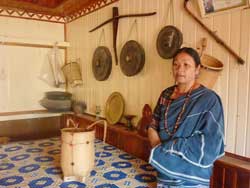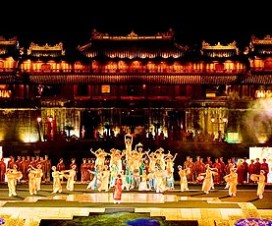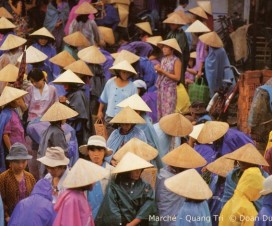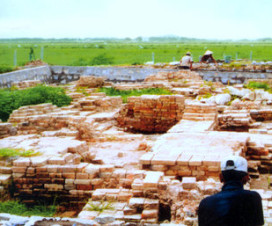Sa Huynh is an area dotted with quaint fishing villages and sandy beaches in the central region’s Quang Ngai Province.Located off National Highway 1A, along milestones 983-987 on the coast of Duc Pho District and parallel to the national railway line, Sa Huynh abounds with golden sand.
The color of the sand changes during the day from an earthy brown early in the morning, to a shimmering gold around noon, followed by a pale blue hue on moonlit nights.
Sa Huynh is rich in local seafood and there are several restaurants offering up fresh meals from the sea.
The area is also steeped in ancient culture dating back to 1,000 BC. The Sa Huynh people are thought to be predecessors of the Cham, the founders of the Champa Kingdom.
Along with the Dong Son Culture in the north and the Oc Eo Culture in the Mekong Delta, Sa Huynh is considered one of the most famous ancient Vietnamese cultures of the Iron Age era.
Along the beach, stretching around 6km, and near the Sa Huynh Tourist Resort is an abundance of scenic highlights.
Visitors can rent motorbikes and travel around Ma Vuong Mound to see historic archeological sites.
In the culture of the ancient Sa Huynh people, the dead were cremated and buried in jars. In the early 20th century, French archeologists excavated these ‘tomb jars’ and found many were also buried with stone adornments and tools.
At Sa Huynh Hotel, about one kilometer south of the Sa Huynh Railway Station, visitors can enjoy the view of the vast blue sea, rest in the shade of green casuarinas, feel the cool breeze on their skin, swim in the sea by a sloping beach, and enjoy food specialties such as boiled crabs with salt and chili, rice porridge with sea urchins, and sour soup with groupers.
When visiting Sa Huynh, be sure to purchase a few kilos of nep ngu (a type of glutinous rice once offered to kings) and fermented urchin paste, which is only available in the summer.




